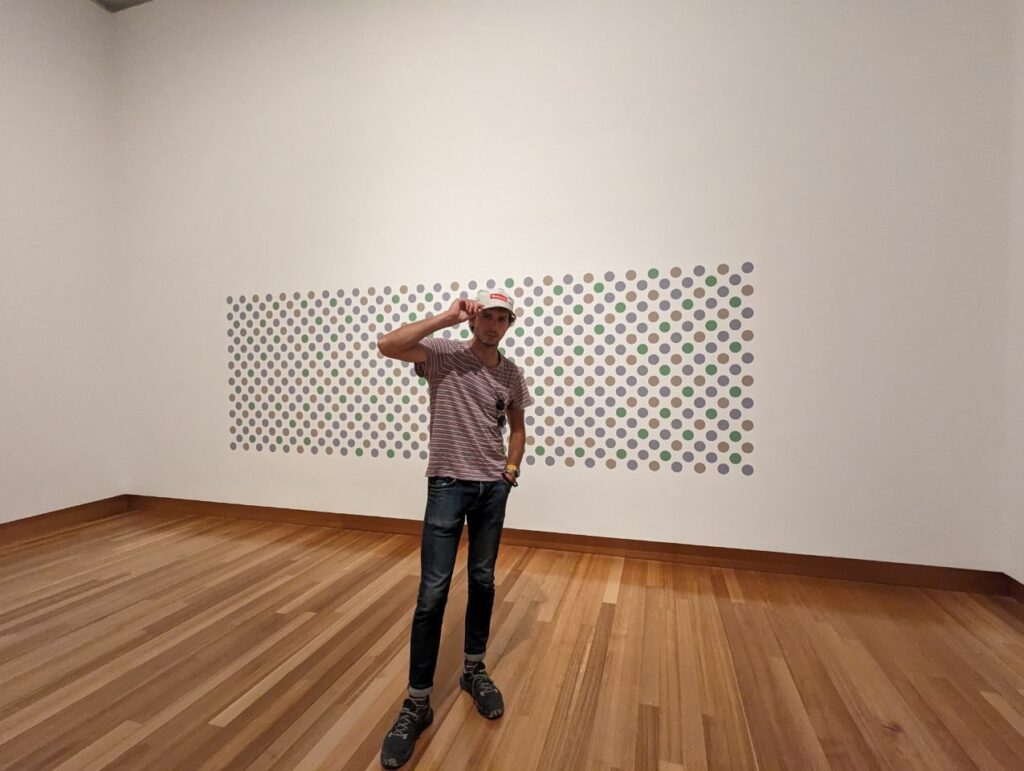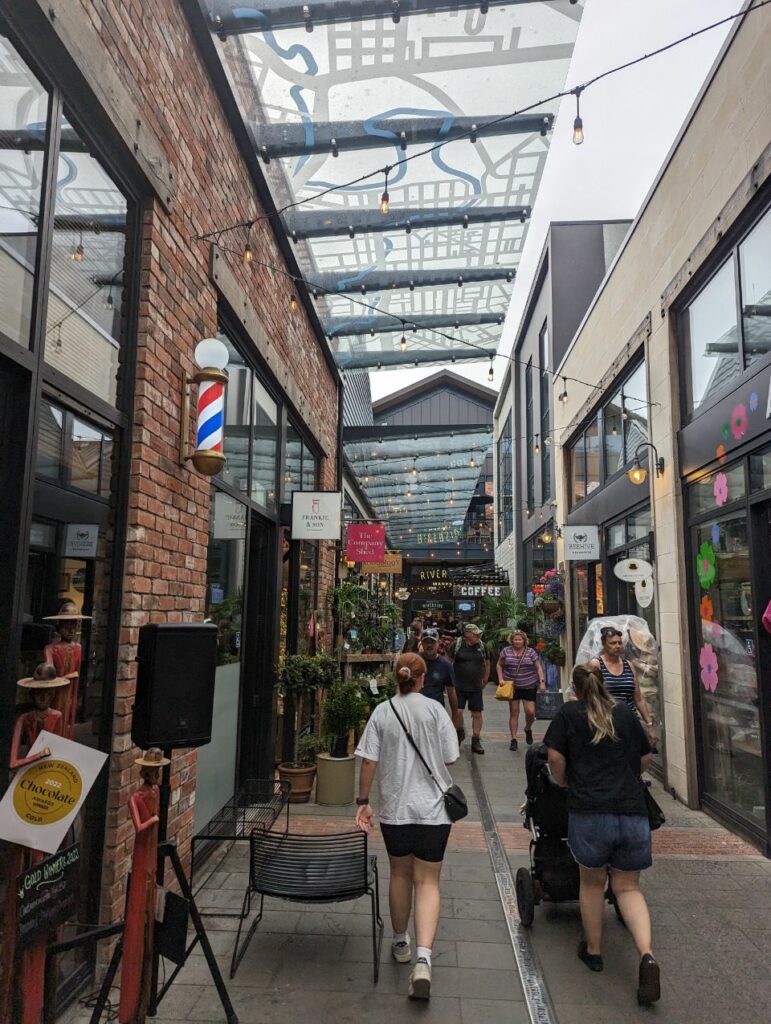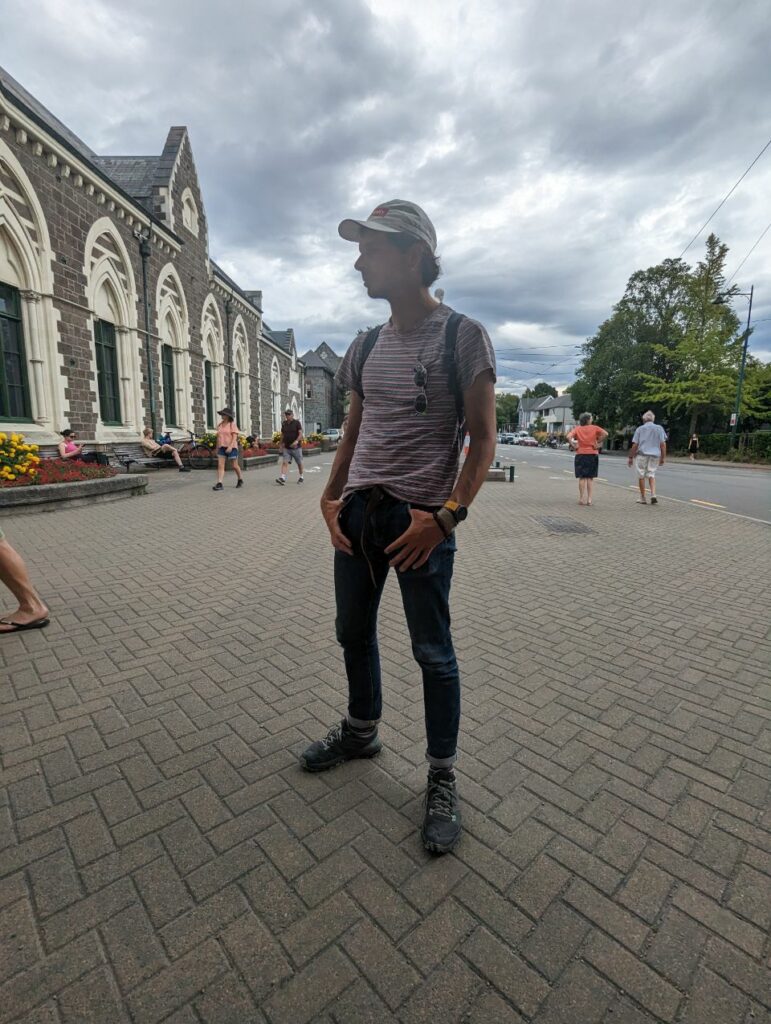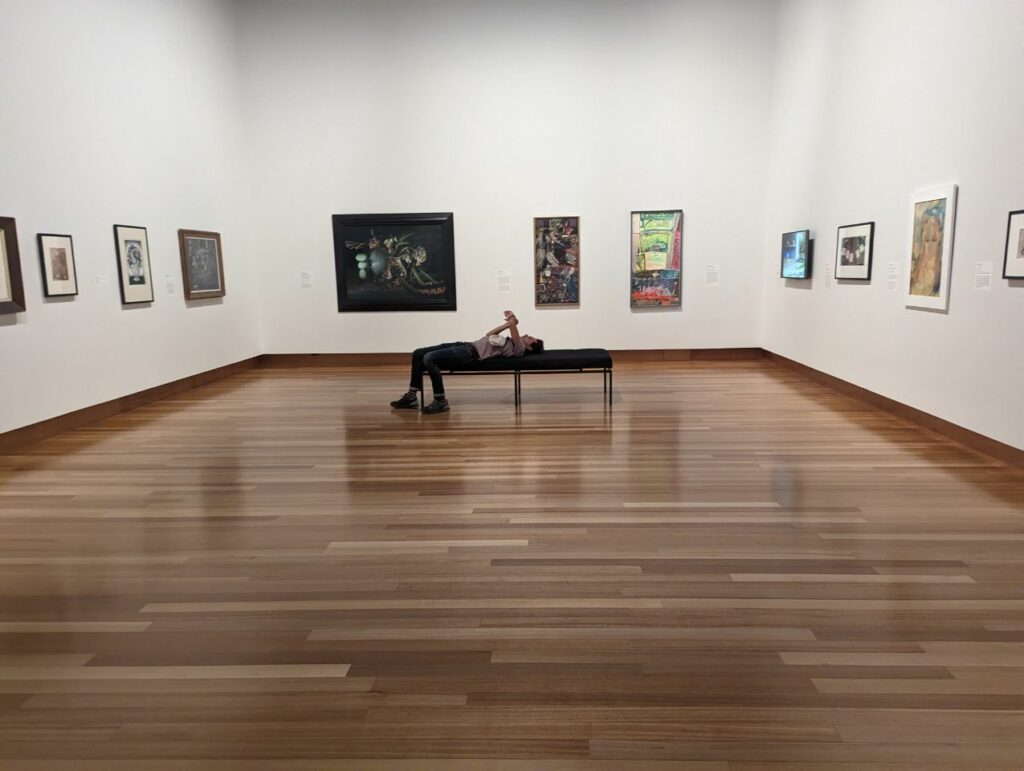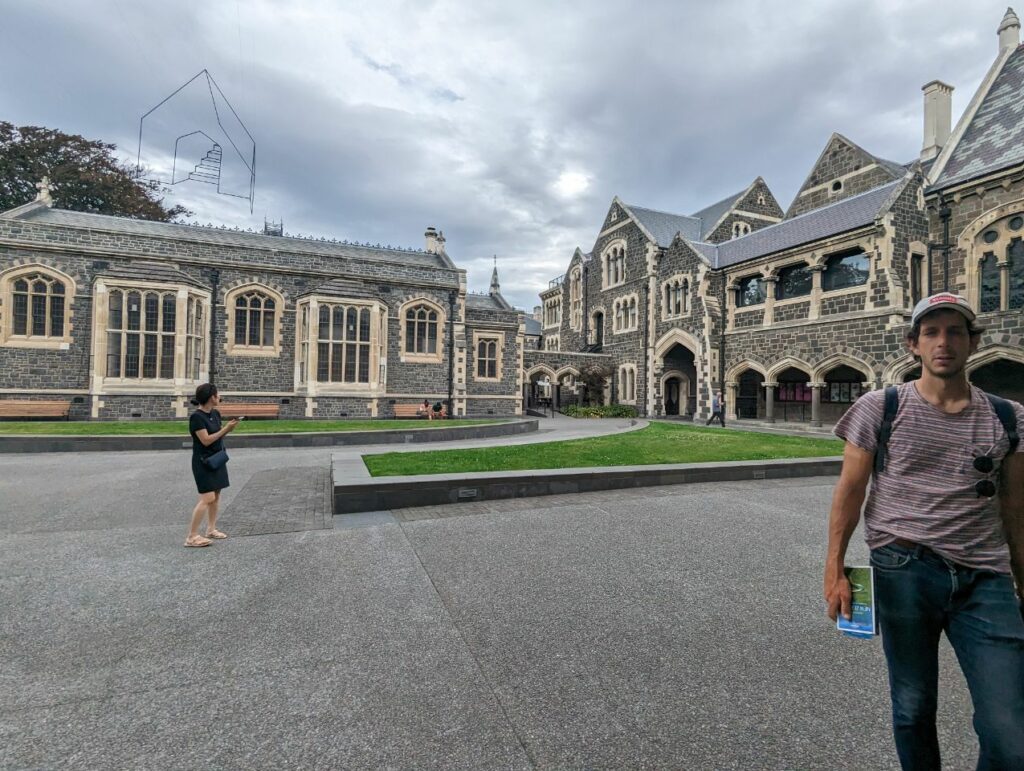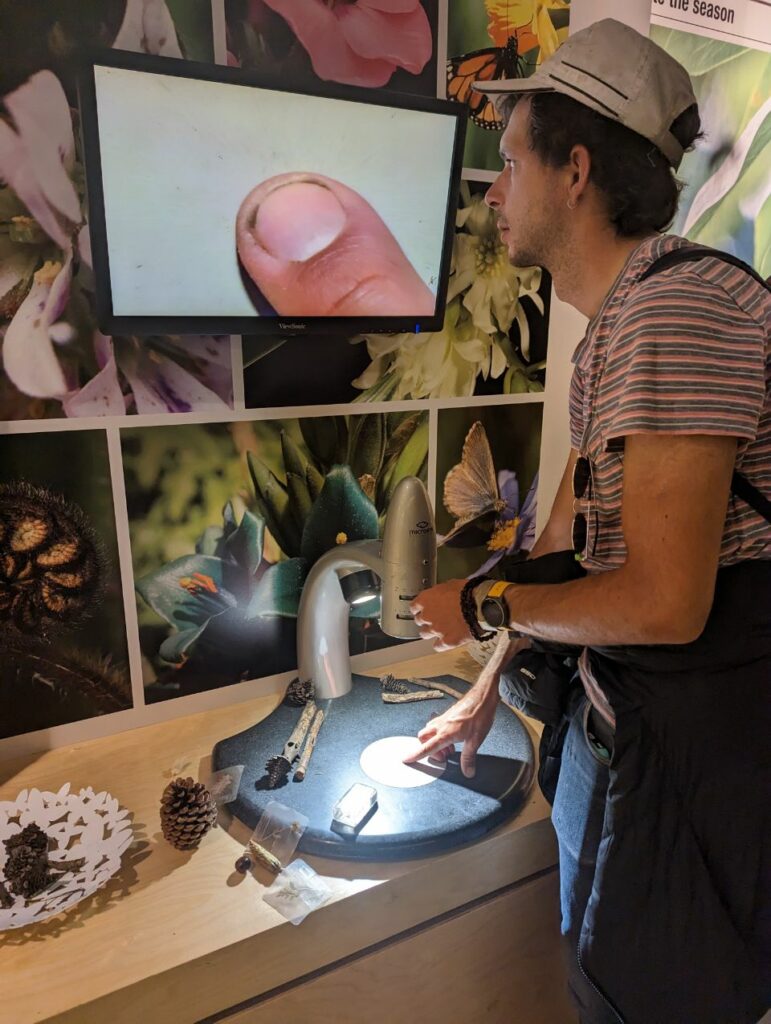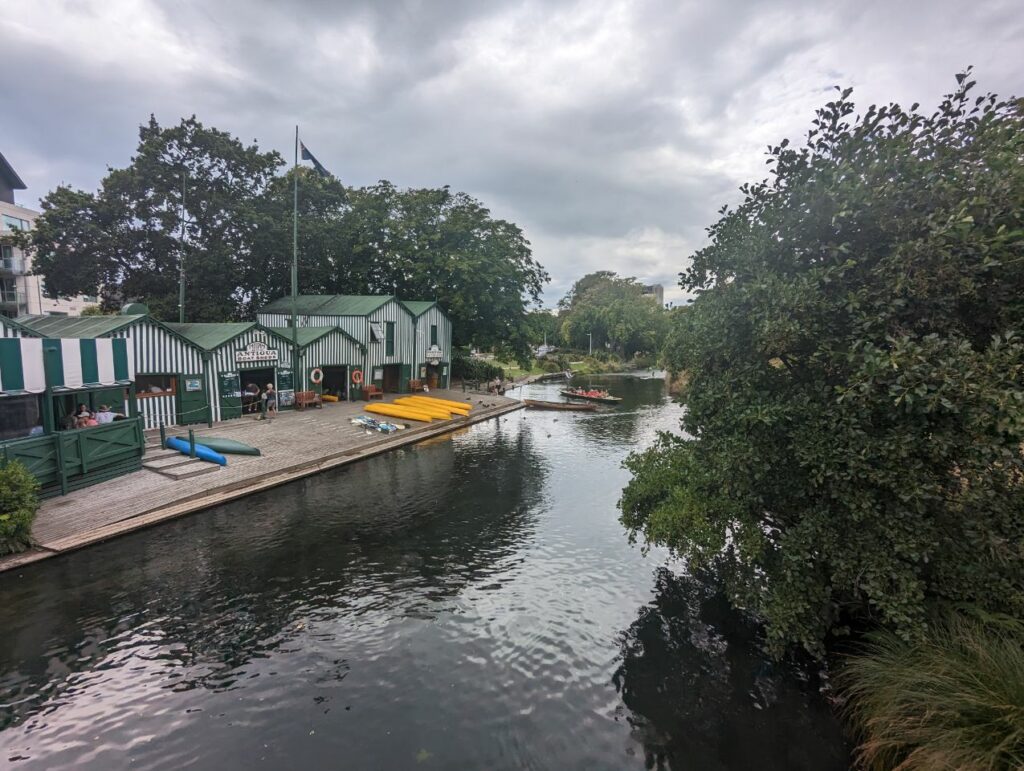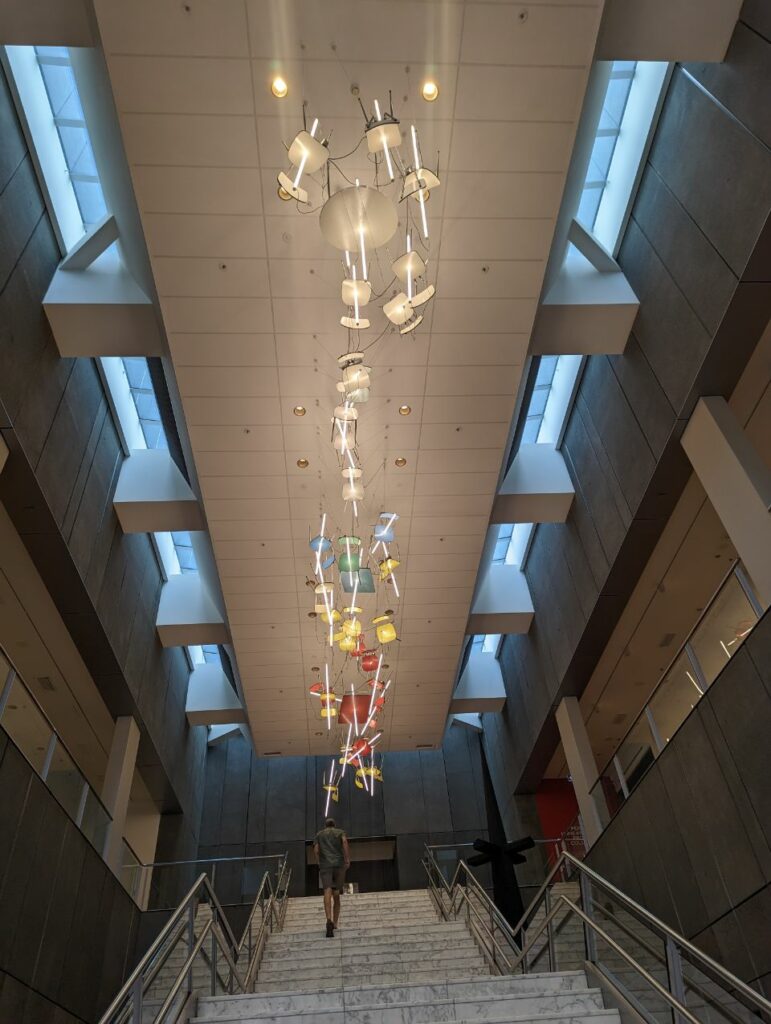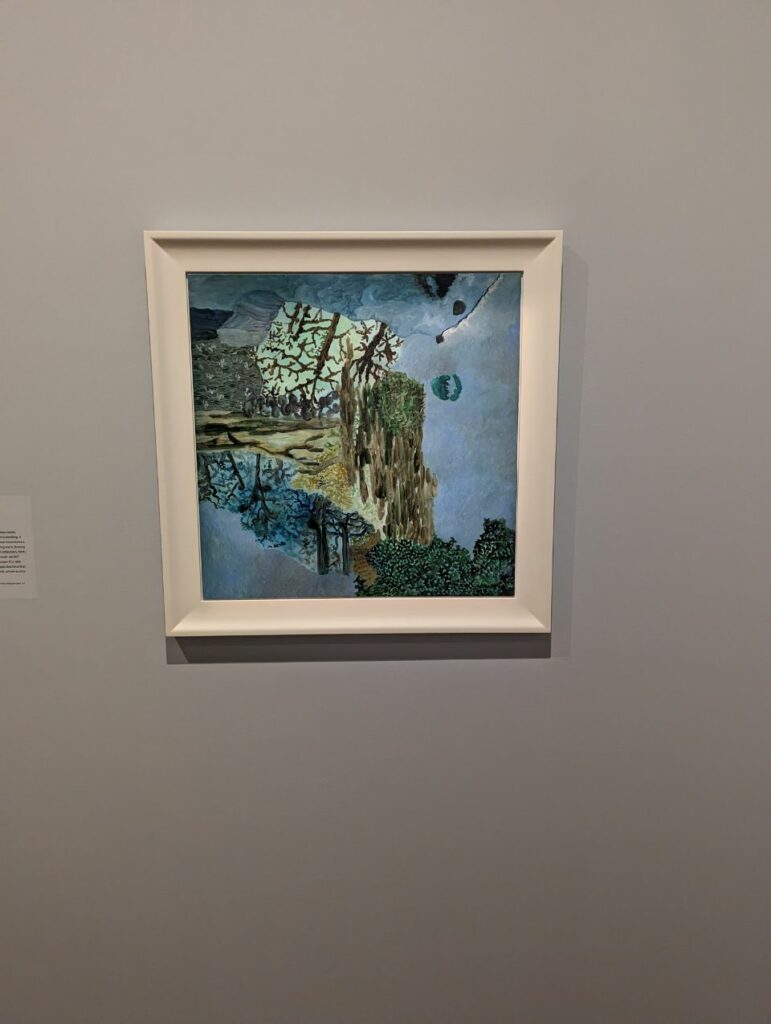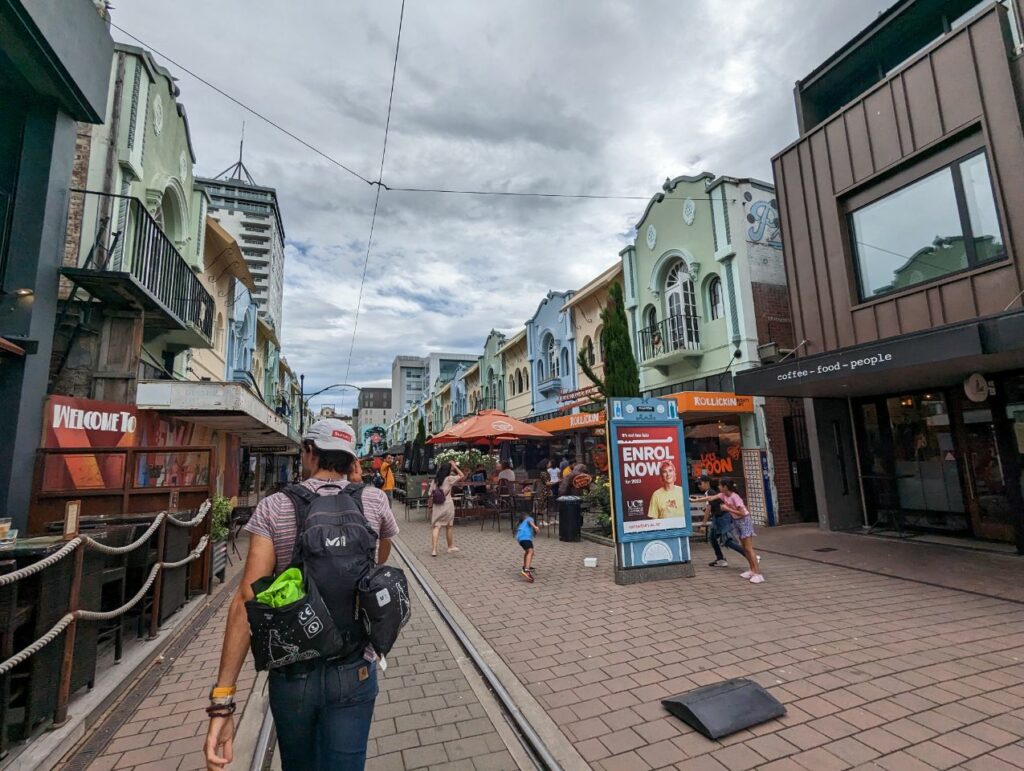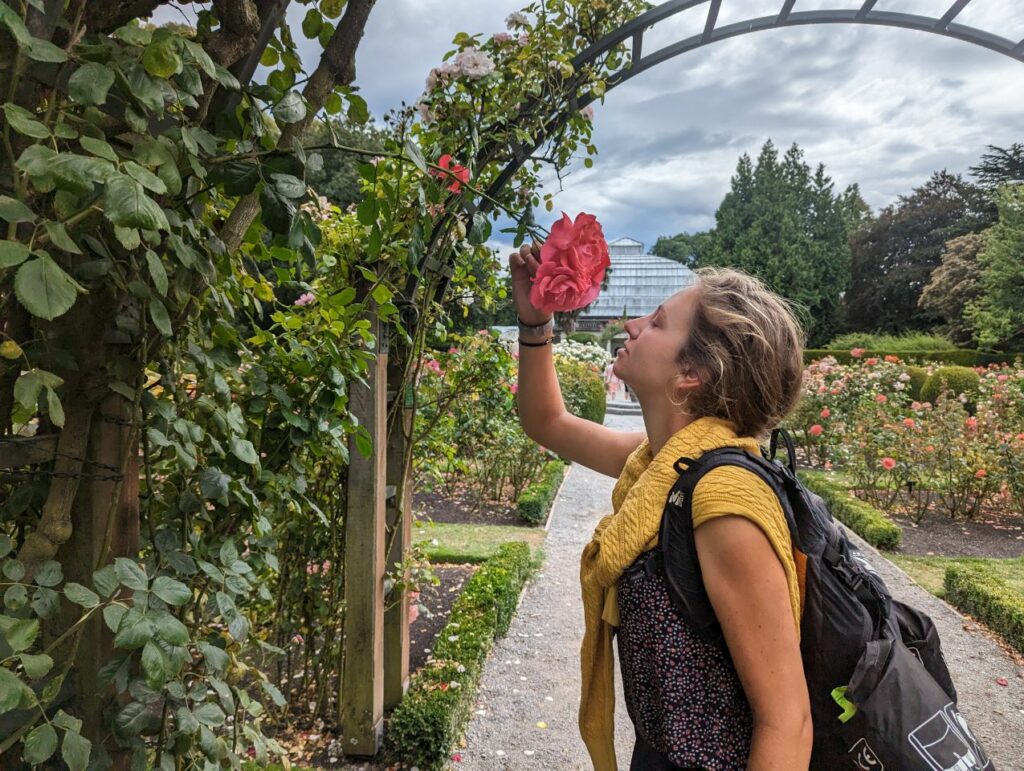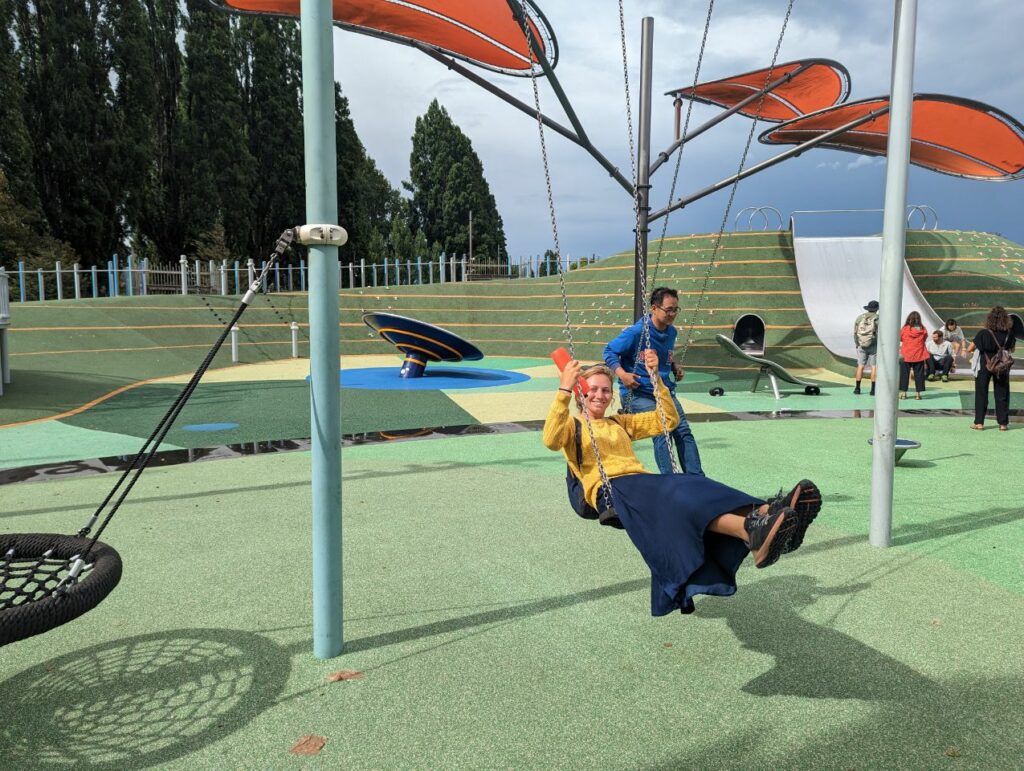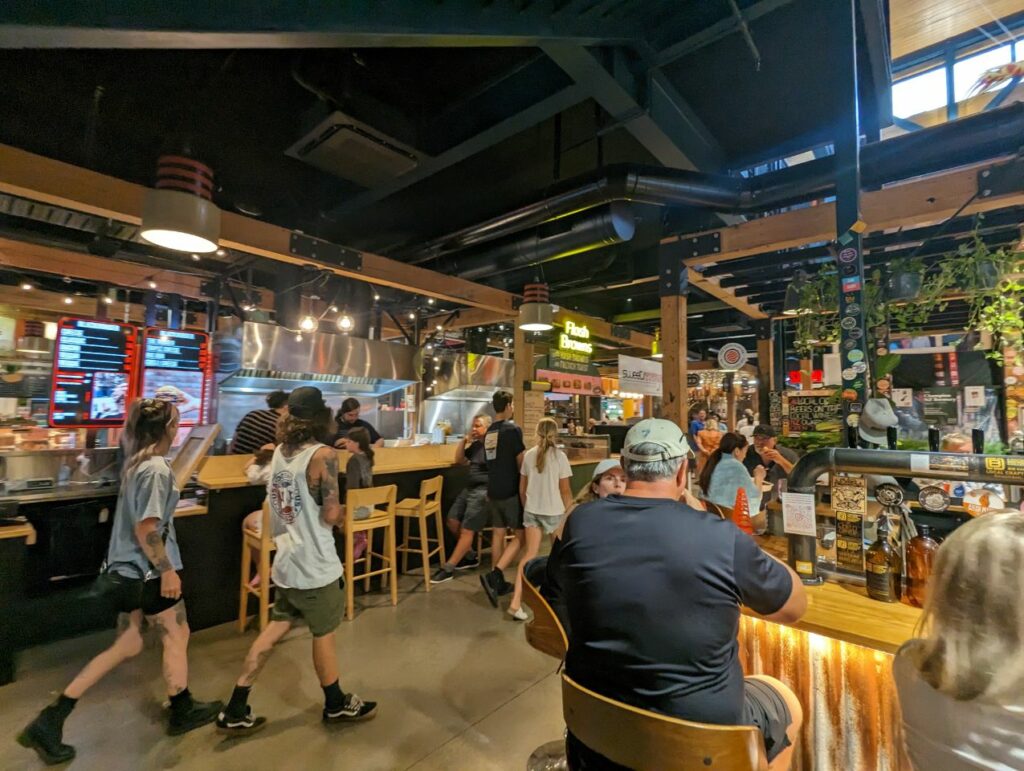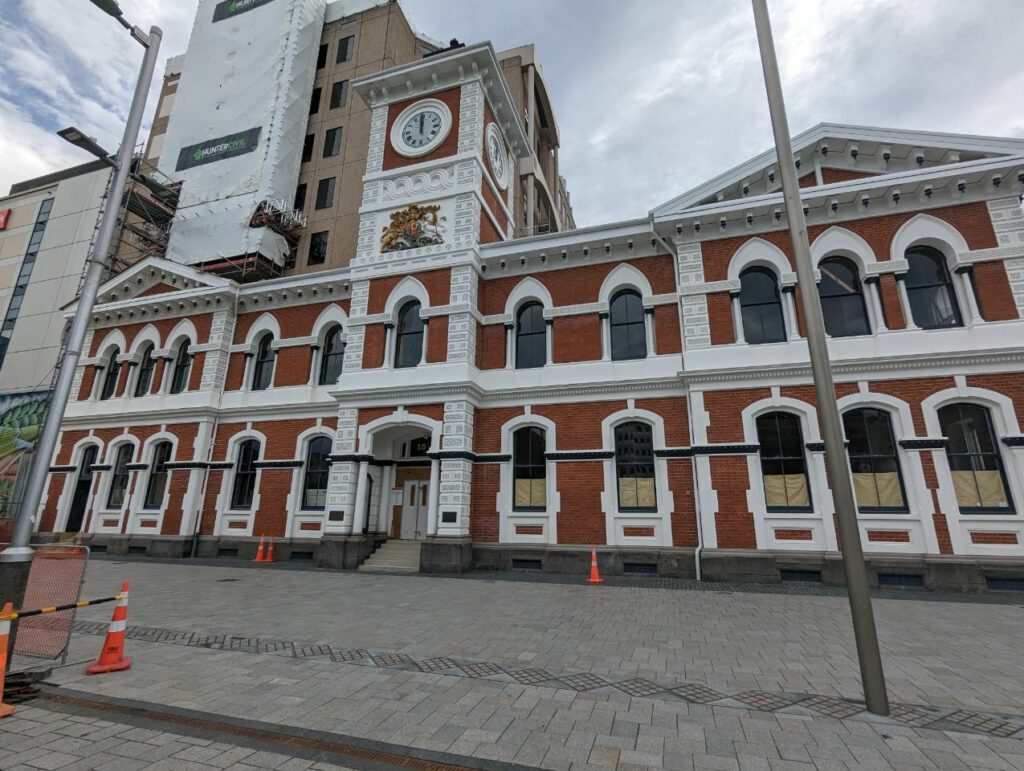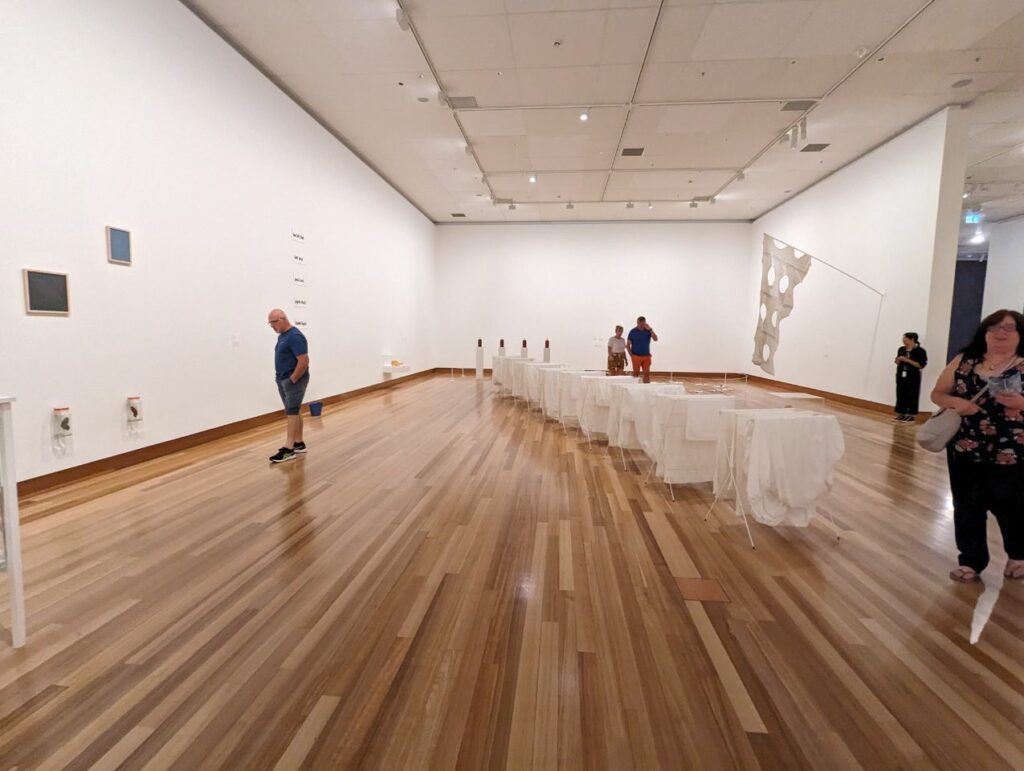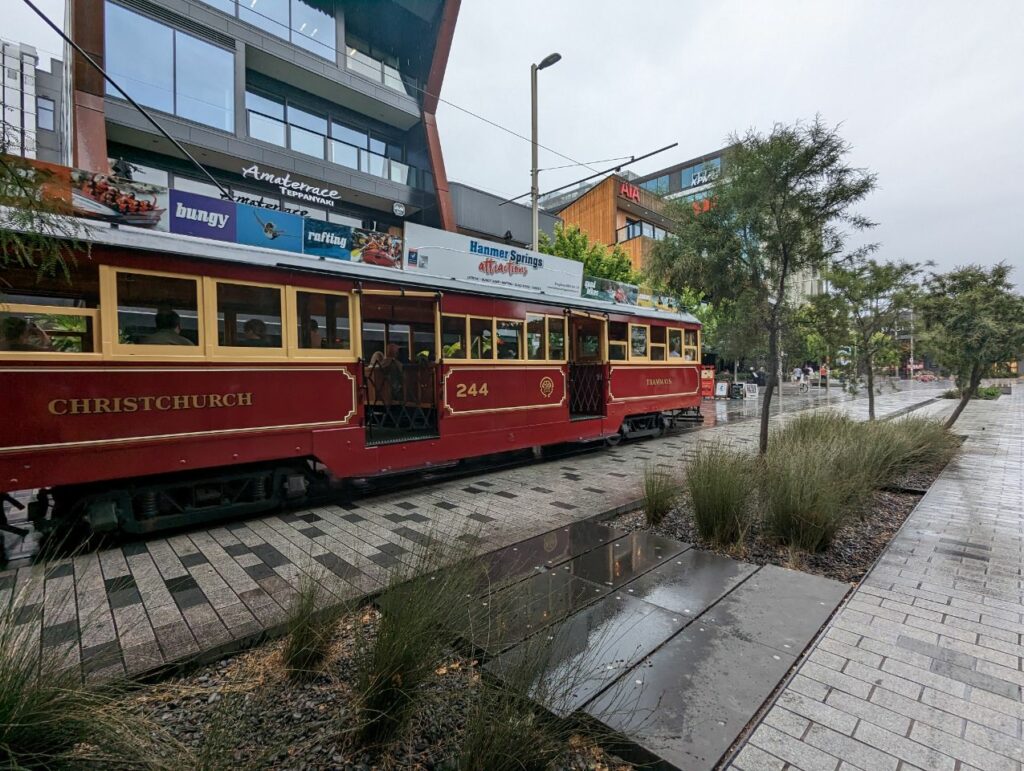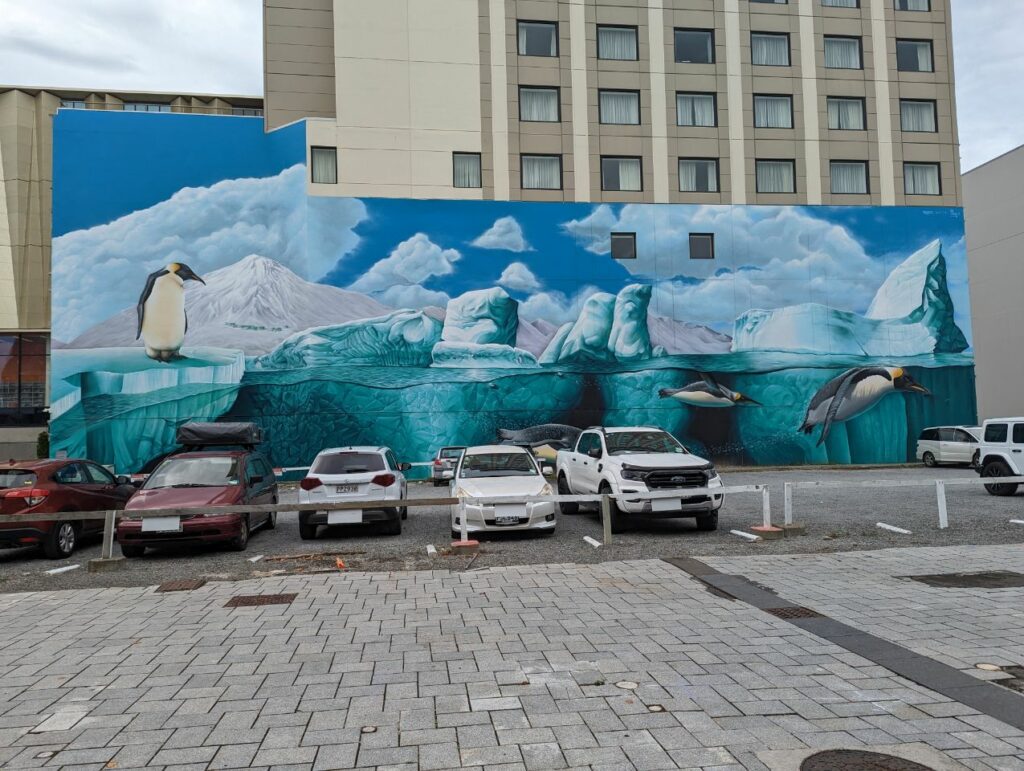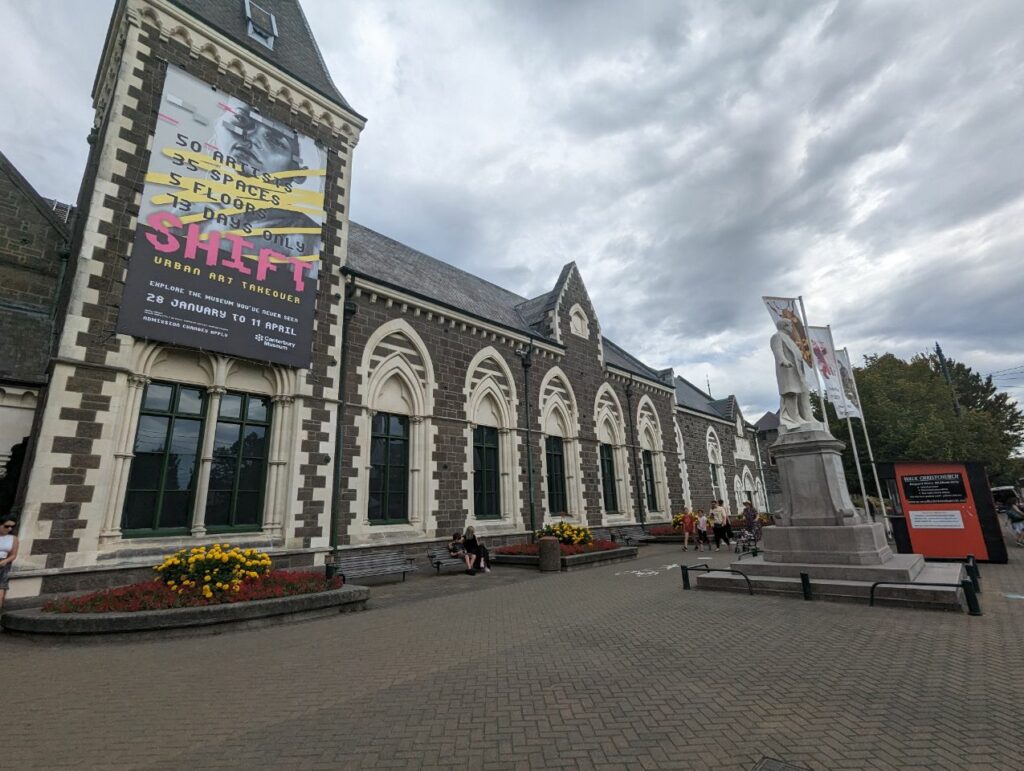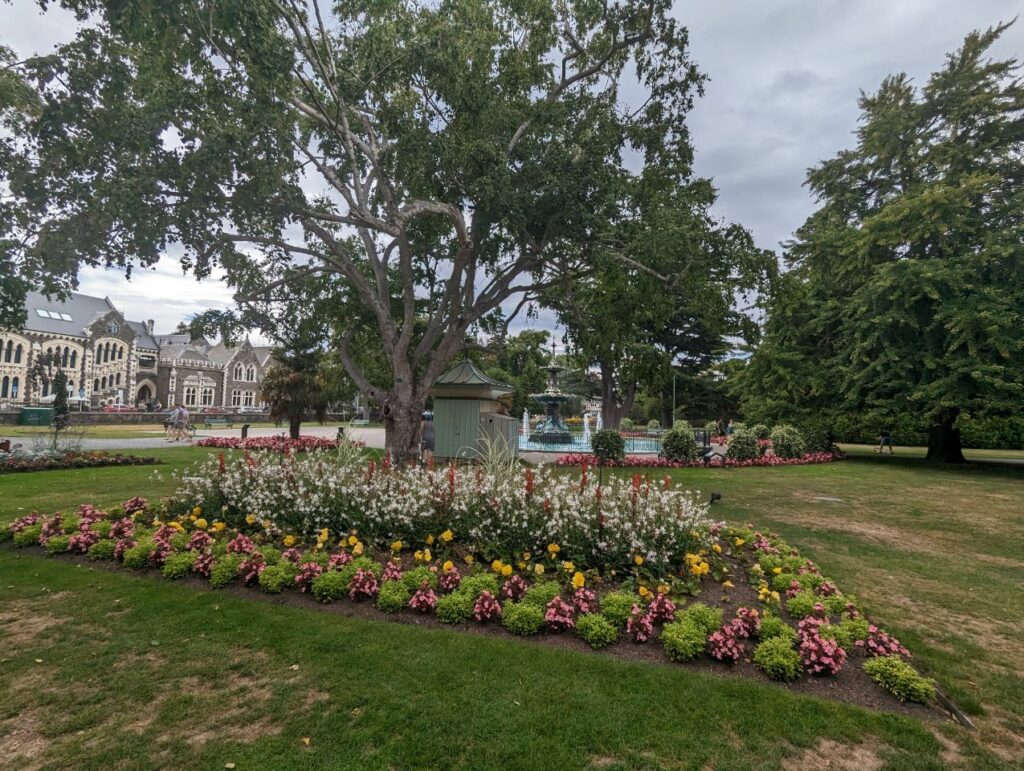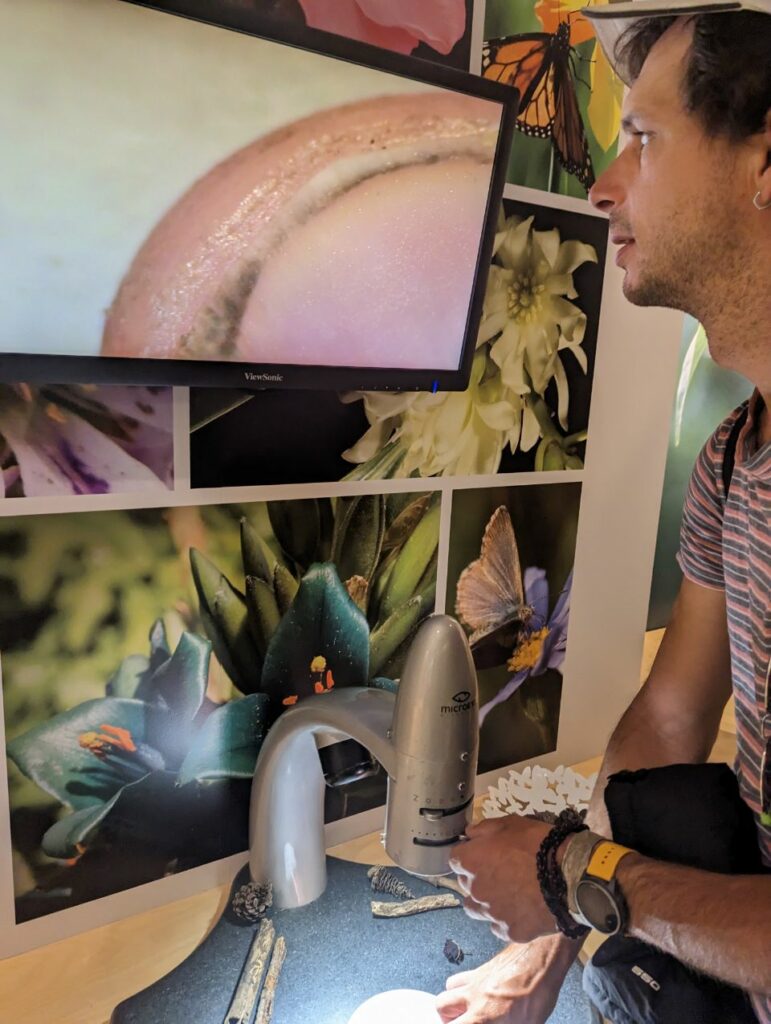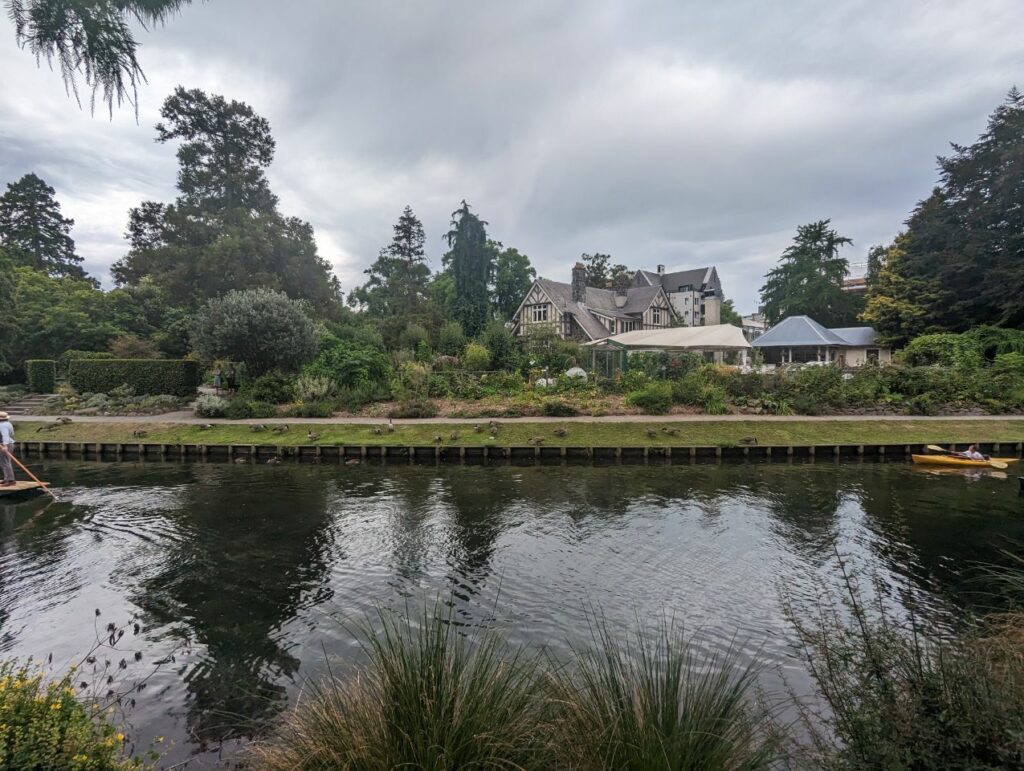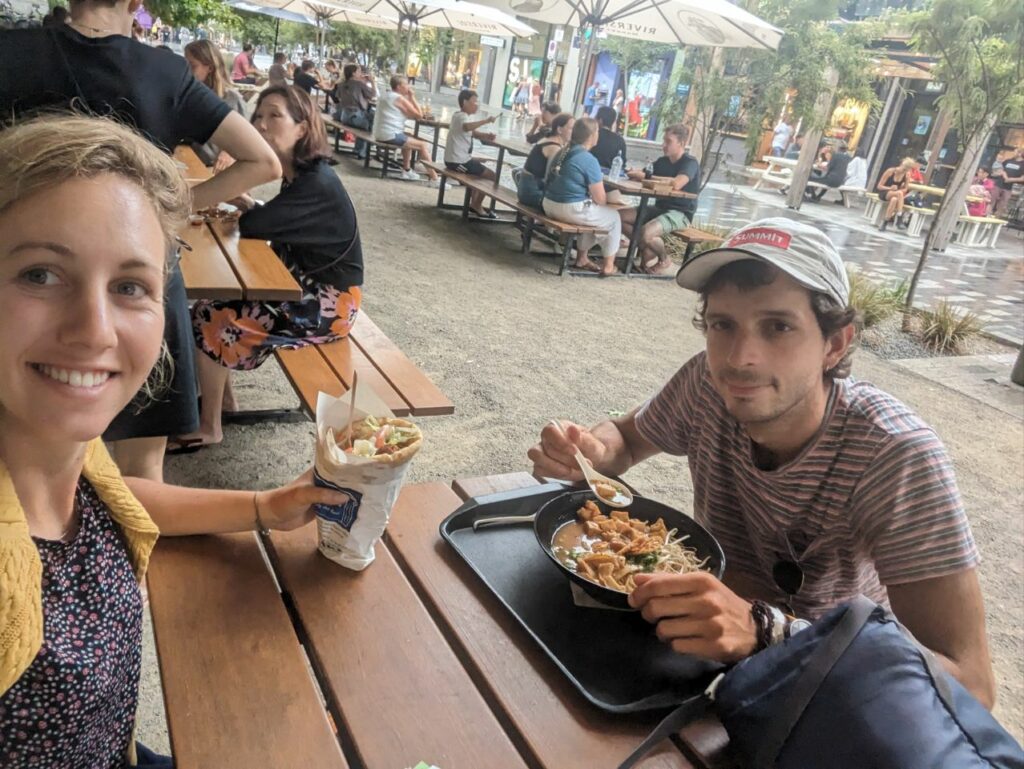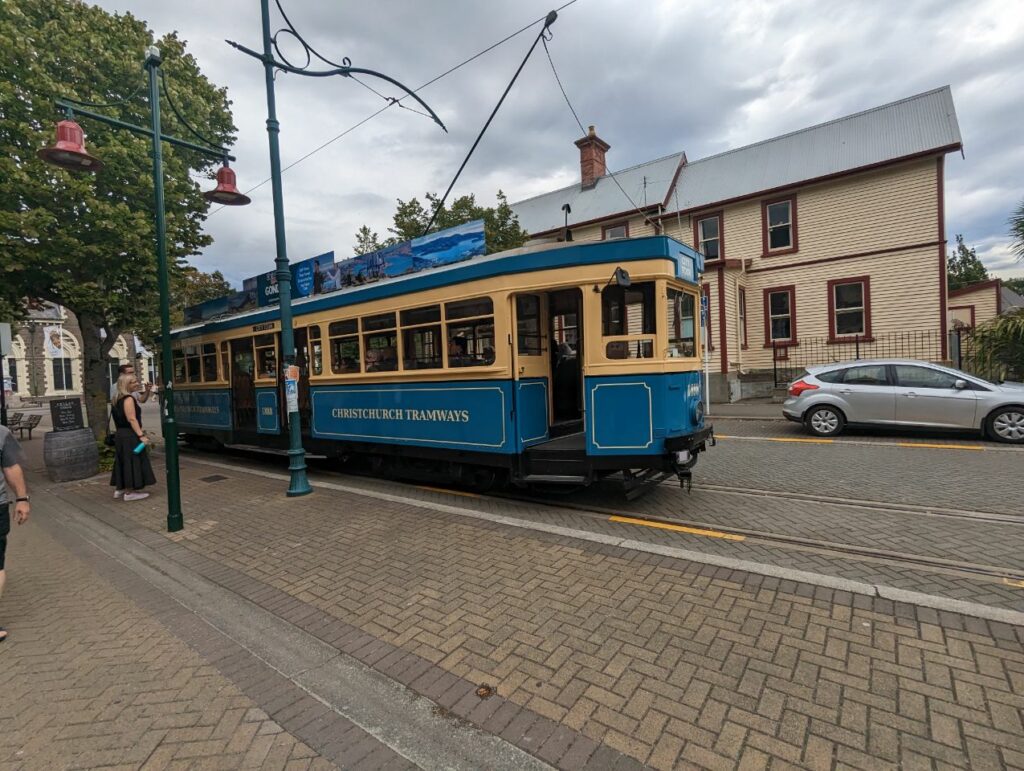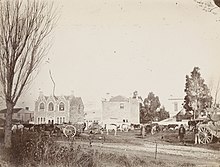Aujourd’hui c’est tourisme dans christchurch. On commence par le Botanic Garden où les cigales se faisaient bien entendre (c’était tellement fort que c’était presque impossible de rester dans le parc!) Puis ballade dans la ville avant de rejoindre le Art Gallery, mais Martin n’est pas trop « sensible » à l’art. Déjeuner au Riverside Market puis viste de la Quake City qui retrace les deux gros tremblements de terre de 2010 et 2011. Ballade à nouveau avant de tomber dans un énorme parc pour enfants ! Puis petit verre avant de rejoindre nos hôtes
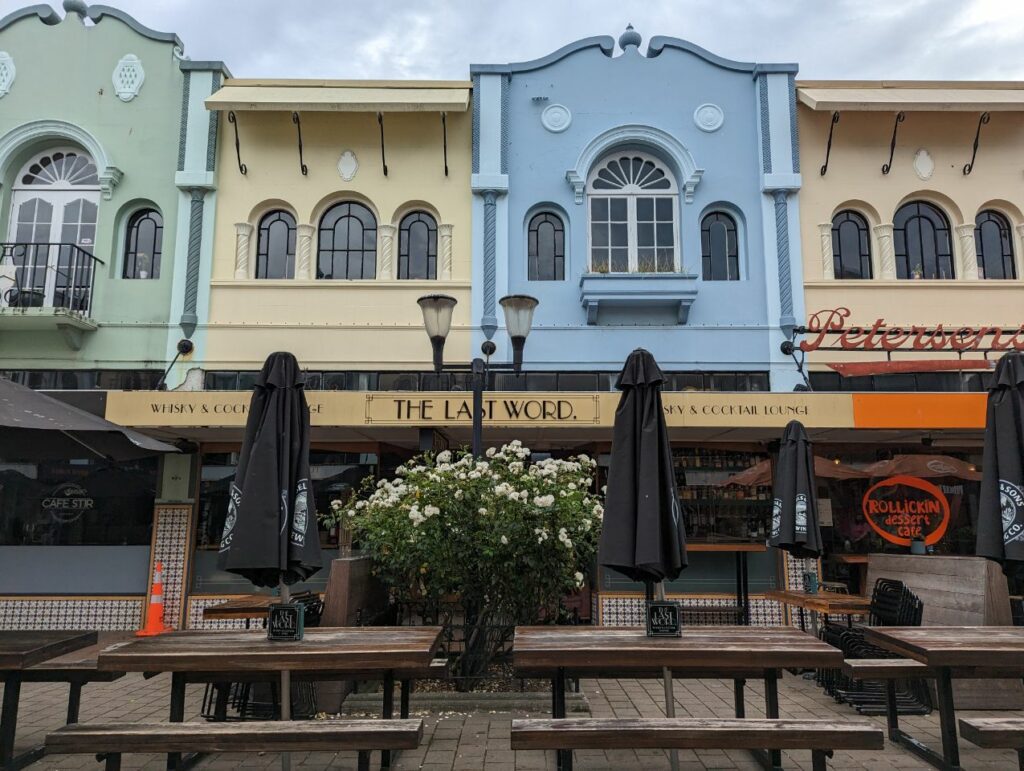
CHRISTCHURCH CENTRAL
5 FEBRUARY 2023
Christchurch (/ˈkraɪstʃɜːrtʃ/ KRYSSE-church; Māori: Ōtautahi) is the largest city in the South Island of New Zealand and the seat of the Canterbury Region. Christchurch lies on the South Island’s east coast, just north of Banks Peninsula on Pegasus Bay. The Avon River / Ōtākaro flows through the centre of the city, with an urban park along its banks. The city’s territorial authority population is 389,300 people, and includes a number of smaller urban areas as well as rural areas.[4] The population of the urban area is 377,900 people.[4] Christchurch is the second-largest city by urban area population in New Zealand, after Auckland. It is the major urban area of an emerging sub-region known as Greater Christchurch.[5] Notable smaller urban areas within this sub-region include Rangiora and Kaiapoi in Waimakariri District, north of the Waimakariri River, and Rolleston and Lincoln in Selwyn District to the south.
The first inhabitants migrated to the area sometime between 1000 and 1250 AD.[6] They hunted moa, which led to the birds’ extinction by 1450, and destroyed much of the mataī and tōtara forest. The first iwi to settle the area that would later become known as Christchurch were the Waitaha, who migrated to the area in the 16th century. They were followed later by the Kāti Māmoe, who conquered the Waitaha. In the 16th and 17th centuries, the Ngāi Tahu migrated to the area and subjugated the Kāti Māmoe. Over time Ngāi Tahu would develop a large pā based around Kaiapoi, which was a major centre for the trade of pounamu.[6]
Christchurch became a city by Royal Charter on 31 July 1856, making it officially the oldest established city in New Zealand. The Canterbury Association, which settled the Canterbury Plains, named the city after Christ Church, Oxford. The new settlement was laid out in a grid pattern centred on Cathedral Square; during the 19th century there were few barriers to the rapid growth of the urban area, except for the Pacific to the east and the Port Hills to the south. Agriculture is the historic mainstay of Christchurch’s economy. The early presence of the University of Canterbury and the heritage of the city’s academic institutions in association with local businesses has fostered a number of technology-based industries. Christchurch is one of five Antarctic gateway cities, hosting Antarctic support bases for several nations.[7]
The city suffered a series of earthquakes between September 2010 and January 2012, with the most destructive occurring at 12.51 p.m. on 22 February 2011, in which 185 people were killed and thousands of buildings across the city suffered severe damage, with a few central city buildings collapsing. By late 2013, 1,500 buildings in the city had been demolished, leading to ongoing recovery and rebuilding projects. The city later became the site of a terrorist attack targeting two mosques on 15 March 2019, in which 51 people were killed, and which was described by the Prime Minister, Jacinda Ardern, as « one of New Zealand’s darkest days ».
History[edit]
Māori settlement[edit]
Archaeological evidence found in a cave at Redcliffs in 1876 has indicated that the Christchurch area was first settled by moa-hunting tribes about 1250 AD.[citation needed] These first inhabitants were thought to have been followed by the Waitaha iwi, who are said to have migrated from the East coast of the North Island in the 16th century. Following tribal warfare, the Waitaha (made of three peoples) were dispossessed by the Ngāti Māmoe iwi. They were in turn subjugated by the Ngāi Tahu iwi, who remained in control until the arrival of European settlers 600 years later.[citation needed]
Land covered in mataī and tōtara forest was cleared in what is now the central city, and in 1500 the population increased due to Kāti Māmoe and then further Ngāi Tahu migration.[15] The largest single settlement was at Kaiapoi‘s pā, a bustling fortification controlled by the powerful Ngāi Tahu hapū Kāi Tūāhuriri.[16] This pā was founded by the nobleman Tūrākautahi, and was run by his family and prestigious tohunga in a highly sophisticated social and economic fabric. Tūrākautahi’s hapū, Kāi Tūāhuriri, was named for his father, the important leader Tūāhuriri. Tūāhuriri a powerful chief who had influence and control over vast swathes of Christchurch, Nelson and Wellington, before a conflict with his brother-in-law Tutekawa caused him to drown in Te Roto o Wairewa (Lake Forsyth).[17][18] The settlement remained where it was, controlled by Tūāhuriri’s descendants, until it was sacked in the 1830s by Te Rauparaha.[19]
European settlement[edit]
After the purchase of land at Putaringamotu (modern Riccarton) by the Weller brothers, whalers of Otago and Sydney, a party of European settlers led by Herriott and McGillivray established themselves in what is now Christchurch, early in 1840. Their abandoned holdings were taken over by brothers William and John Deans[20] in 1843 who stayed. The First Four Ships were chartered by the Canterbury Association and brought the first 792 of the Canterbury Pilgrims to Lyttelton Harbour. These sailing vessels were the Randolph, Charlotte Jane, Sir George Seymour, and Cressy. The Charlotte Jane was the first to arrive on 16 December 1850. The Canterbury Pilgrims had aspirations of building a city around a cathedral and college, on the model of Christ Church in Oxford.[21]
The name « Christ Church » was decided before the ships’ arrival, at the Association’s first meeting, on 27 March 1848. The exact basis for the name is not known. It has been suggested that it is named for Christchurch, in Dorset, England; for Canterbury Cathedral; or in honour of Christ Church, Oxford. The last explanation is the one generally accepted.[8]
At the request of the Deans brothers – whose farm was the earliest European settlement in the area – the river was named after the River Avon in Scotland, which rises in the Ayrshire hills near to where their grandfather’s farm was located.[22]
Captain Joseph Thomas, the Canterbury Association’s Chief Surveyor, surveyed the surrounding area. By December 1849 he had commissioned the construction of a road from Port Cooper, later Lyttelton, to Christchurch via Sumner.[23] However, this proved more difficult than expected and road construction was stopped while a steep foot and pack horse track was constructed over the hill between the port and the Heathcote valley, where access to the site of the proposed settlement could be gained. This track became known as the Bridle Path, because the path was so steep that pack horses needed to be led by the bridle.[24]
Goods that were too heavy or bulky to be transported by pack horse over the Bridle Path were shipped by small sailing vessels some eight miles (13 km) by water round the coast and up the Avon Heathcote Estuary to Ferrymead. New Zealand’s first public railway line, the Ferrymead Railway, opened from Ferrymead to Christchurch in 1863. Due to the difficulties in travelling over the Port Hills and the dangers associated with shipping navigating the Sumner bar, a railway tunnel was built through the Port Hills to Lyttelton, opening in 1867.[25]

Christchurch became a city by royal charter on 31 July 1856, the first in New Zealand. Many of the city’s Gothic Revival buildings by architect Benjamin Mountfort date from this period. Christchurch was the seat of provincial administration for the Province of Canterbury, which was abolished in 1876. By 1874, Christchurch was New Zealand’s fourth largest city with a population of 14,270 residents.[26] Christchurch buildings were damaged by earthquakes in 1869, 1881 and 1888.[27] The 1888 earthquake caused the highest 7.8 metres of the Christchurch Cathedral spire to collapse.[28]
1901–2000[edit]
In 1901 an earthquake measuring 6.9, centred near Cheviot, caused the spire on top of Christchurch Cathedral to collapse again, but this time only the top 1.5 metres fell. On this occasion it was rebuilt with timber and metal instead of stone.[28]
In 1906, the New Zealand International Exhibition opened in Hagley Park. More than one million people visited the exhibition.[29] In 1908 a large fire which started at the Stranges Department Store destroyed buildings in central Christchurch on High St, Cashel St and Lichfield Streets.[30]
Christchurch started to receive a regular supply of electricity from the Lake Coleridge hydroelectric scheme in April 1915 and as a result the first electric lights became operational in Christchurch in May 1915.[31]
The Spanish Flu epidemic arrived in Christchurch in November 1918. It would eventually lead to the deaths of 466 Christchurch people.[32]
The population of Christchurch exceeded 100,000 for the first time in 1919.[33]
The first set of traffic lights was installed in Christchurch in 1930 at the intersection of Cashel and Colombo Streets.[34]
In 1940, after several years of planning, Harewood Airport opened for flying. This was developed over a number of years to become Christchurch International Airport and in 1950 it was New Zealand’s first international airport.[35]
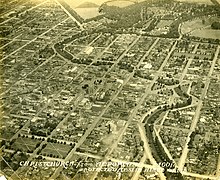
In 1947, New Zealand’s worst fire disaster occurred at Ballantyne’s Department Store in the inner city, with 41 people killed in a blaze which razed the rambling collection of buildings.[36]
The Lyttelton road tunnel between Lyttelton and Christchurch was opened in 1964.[37]
In 1969, the one-way system running through central Christchurch was established. The first two streets to be made one-way were Lichfield and St Asaph streets. They were followed by Barbadoes, Madras, Salisbury and Kilmore streets.[38]
The Christchurch Town Hall was opened in 1972.[39]
Christchurch hosted the 1974 British Commonwealth Games.
The Al-Noor Mosque was opened in 1985, this being the second in the country at that time.[40]
21st century[edit]
2010–2012 earthquakes[edit]

On Saturday 4 September 2010, a magnitude 7.1 earthquake struck Christchurch and the central Canterbury region at 4:35 am. With its epicentre near Darfield, west of the city at a depth of 10 kilometres (6.2 mi), it caused widespread damage to the city and minor injuries, but no direct fatalities.[42][43]
Nearly six months later on Tuesday 22 February 2011, a second earthquake measuring magnitude 6.3 struck the city at 12:51 pm. Its epicentre was located closer to the city, near Lyttelton at a depth of 5 km (3 mi).[44]
Although lower on the moment magnitude scale than the previous earthquake, the intensity and violence of the ground shaking was measured to be IX (Violent), among the strongest ever recorded globally in an urban area[45] and 185 people were killed.[46][47] People from more than 20 countries were among the victims.[48] The city’s ChristChurch Cathedral was severely damaged and lost its spire.[49][50] The collapse of the CTV Building resulted in the majority of fatalities. Widespread damage across Christchurch resulted in loss of homes, major buildings and infrastructure. Significant liquefaction affected the eastern suburbs, and the total cost to insurers of rebuilding has been estimated at NZ$20–30 billion.[51][52]
There were continuing aftershocks for some time, with 4,558 above a magnitude 3.0 recorded in the Canterbury region from 4 September 2010 to 3 September 2014.[53] Particularly large events on 13 June 2011,[54] 23 December 2011,[55][56][57] and 2 January 2012[58] all caused further damage and minor injuries; but no further deaths. Following the earthquakes over 1500 buildings in the city had been demolished or partly demolished by September 2013.[59]
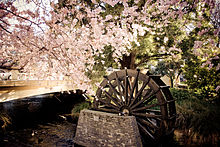
The city experienced rapid growth following the earthquakes. A Christchurch Central Recovery Plan guides rebuilding in the central city. There has been massive growth in the residential sector, with around 50,000 new houses expected to be constructed in the Greater Christchurch area by 2028 as outlined in the Land Use Recovery Plan (LURP).
2017 bushfires[edit]
On 13 February 2017, two bush fires started on the Port Hills. These merged over the next two days and the single very large wild fire extended down both sides of the Port Hill almost reaching Governors Bay in the south-west, and the Westmorland, Kennedys Bush, and Dyers Pass Road almost down to the Sign of the Takahe. Eleven houses were destroyed by fire, over one thousand residents were evacuated from their homes, and over 2,076 hectares (5,130 acres) of land was burned.[60]
2019 terrorist attack[edit]
Fifty-one people died from two consecutive mass shootings at Al Noor Mosque and Linwood Islamic Centre by an Australian white supremacist carried out on 15 March 2019.[61][62][63][64][65] Forty others were injured.[66] The attacks have been described by Prime Minister Jacinda Ardern as « one of New Zealand’s darkest days ».[67] On 2 June 2020, the attacker pleaded guilty to multiple charges of murder, attempted murder, and terrorism.[68][69] On 27 August, he was sentenced to life in prison without parole, the first time such a sentence was handed down in New Zealand.[70][71][72]

